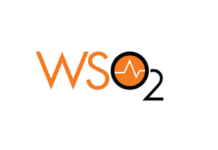By Dr. Neha Sharma Lactation Consultant, MPT& Lamaze practitioner Apollo Cradle
New Delhi, August 12, 2018: Breast milk provides all the infant’s needs for energy and nutrients during the first six months of life, and the milk continues to meet half or more of the child’s nutritional need during the second part of its first year and about third of such needs during the second year. All babies should be breast fed exclusively during the first six months of age with continued breastfeeding along with complimentary foods only after six months up to two years of age according to the WHO guidelines. However, in the last few years, people are contradicting the significance of breastfeeding and there are certain studies for dismissing the report but medical science have continued to uphold the importance of breastfeeding for a newborn.Breastfeeding is a natural phenomenon and is the ideal way of continuing the close relationship which a mother and her baby develop throughout pregnancy. So, a mother should consider breastfeeding as a blessing and must not miss this opportunity at any cost as it not only benefits the baby but also her.
Irrational beliefs, lack of awareness, discomforts of mother, preconceived notions about breast size and shape, easy availability of formula milk etc. are few factors accountable for existing notions around breast feeding. And here are some of the most prevalent ones –
Myths about Breastfeeding
Myth 1: Breastfeeding should not be done for the first 48 hours
The traditional belief of discarding the colostrum and delaying feed is still in practice to our surprise but has no medical basis. On the contrary, the baby loses all the immunity boosters by throwing off the milk. Colostrum, the first feed which is released for 48 hours or more after birth is thick, yellowish / clear or brownish in color and is perfect for the newborns. It is antibody rich and comprises of growth factors which help babies gut to mature and fight infections and allergies. It is also a purgative – preventing Jaundice in newborns. With continuous feeding, the colostrum transits into mature milk from roughly fourth day onwards and is the best and optimal nutrition for babies helping in their growth and development.
Rather than guessing when and how long to breastfeed, keep the baby as close to the mother as possible and often in skin to skin contact. Feed the baby till he or she is satisfied and pulls off from the breast on his or her own.
Myth 2: Women with small breast sizes face difficulty while breastfeeding
Mothers are often concerned about whether they have enough milk supply for the baby especially when the size of their breasts is small. The fact is that the size of the breast whether small or large does not reflect the milk production capacity. The glandular tissue of breast has numerous milk releasing cells which surround each alveoli. Milk released from these cells flow through the ducts from the alveoli to the nipple. Suckling by the baby stimulates receptors in the nipple which signal the pituitary and hypothalamus glands in mother’s brain to release hormones for activating and releasing milk from milk secreting cells. Hence, frequent sucking stimulates milk production and not the size.
The only exception being after breast reduction surgeries there are chances that the ducts are compromised along with adipose tissue thus affecting the milk supply to some extent.
Myth 3: Breastfeeding affects the shape
Ruining of breast shape often bother lactating mothers which can be taken care by wearing supporting
bra (neither too tight or loose) and following mild breast tissue exercise as advised by the physiotherapist. After weaning the baby from feeding, the breasts will start reducing to their original size with proper care.
Myth 4: Cesarean Women feel it’s difficult to breastfeed
Delay in feeding is commonly observed after cesarean birth where a mother herself is recovering from the pain of the stiches and hence finds it hard to feed. With a little lactation guidance and support from family members, breastfeeding can be easily initiated in the critical period after birth. A mother can feed while lying on her back or on either side, reclining on bed/chair/ sofa or sitting upright depending on the type of birth she had and comfort level. Holding the baby so that the nipple is grasped along with the black region surrounding the nipple (the areola) at the correct angle will make breastfeeding easy and avoid problems. Placing the baby with his or her tummy touching the mother without supporting the head gives a wide mouth latch on the breast for easy pain free flow of milk.
It is essential that Skin to Skin (STS) is initiated as early as possible in cesarean mothers to give breast feeding a good start.
Myth 5: A mother should stop breastfeeding the child after six months of age
This isn’t a compulsion, but a choice. Many mothers prefer to feed their child even beyond six months of age. In fact, according to WHO and other sources a mother can breastfeed her child up to two years of age.
Myth 6: Women usually feel that they will have sexual arousal while breastfeeding
Many women feel sexually aroused while breastfeeding as hormones of breastfeeding and sex are same – oxytocin. They may not talk about it as they may be ashamed but it’s a completely natural phenomenon. When a woman nurse her baby, the body releases the hormonal oxytocin due to which mother feels tingling sensation and the postpartum uterine cramping felt while breastfeeding.
Myth 7: The mother should not breastfeed if suffering from an infection to avoid spreading to the newborn
If the mother has an infection, she can breastfeed her baby without any fear of spreading infections. As the mother is already suffering from the infection, the antibodies in the mother’s body enter into the baby via breastmilk and be on the vigil to fight off the infection causing microbes. Thus, it is perfectly alright to breastfeed your baby, unless your doctor advices otherwise.
In the case of HIV, 65% of babies born to HIV mothers never get the infection and with antiretroviral therapy, the chances of infection further goes down. However, there are certain infections caused due to epilepsy, Cancer or TB, which can be dangerous for the newborn, and breastfeeding is prohibited when such infections are present.
Myth 8: It will be difficult to lose weight while breastfeeding
The fact is quite opposite. A lactating mother can gradually burn between 300 – 500 calories per day, simply by breastfeeding. It takes energy to produce milk and if the milk sac is empty, the production of milk continues. When the milk sac is not empty or full, the production of milk gradually slows down and stops.
Myth 9: Women who undergo breast surgeries both cosmetic and otherwise should not breastfeed
Another belief surrounding breastfeeding is that if a woman who undergoes any kind of breast surgery including cosmetic surgeries should not breastfeed as the silicone implants might affect milk production. But the truth is breast surgeries, both cosmetic and otherwise are designed in such a way that they do not affect milk production. So, there is no reason to worry.
Myth 10: Mothers breastfeeding gets less sleep and arestressed
Breastfeeding undoubtedly is a demanding task for mothers. It becomes a smooth process once the demand and supply cycle is streamlined. The hormones released during breastfeeding calms them down and becomes a relaxation process enabling them to sleep better. Many women report feeling relaxed while breastfeeding because nursing triggers the release of the hormone oxytocin. On the contrary, Postpartum Depression (PPD)are often observed in mothers who are not breastfeeding.
Myth 11: Drinking more water bulges the tummy out making them look fat
Hydration and good nutrition are important for breastfeeding mothers. Drinking a lot of liquids will dramatically affect a woman’s milk supply and quality. Healthy diet and enough water improves the quality of breast milk as 88% of breast milk is water.
Conclusion:
Nonetheless, multiple health benefits. Are associated with breastfeeding.Numerous studies have revealed that the longer women breastfeed, the more they’re protected against breast and ovarian cancer. For breast cancer, nursing for at least a year appears to have the most protective effect.Many women report feeling relaxed while breastfeeding. That’s because nursing triggers the release of the hormone oxytocin.
Preterm infants with extremely low birth weight who receive breast milk shortly after birth improves their mental development when compared with preterm infants who weren’t given breast milk. Breastfeeding also activates oro-motor structure in newborns and infants helping them achieve their speech milestone early. Finally, the emotional bonding that takes place during breastfeeding probably contributes to some undeniable brainpower benefits.






















